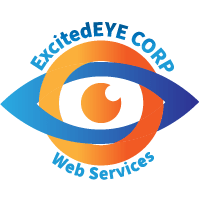A Comprehensive Guide to Landing Page Design: Turning Clicks into Conversions
In the digital marketing universe, landing pages are like the Swiss Army knives of conversions. Landing pages are designed to do one thing exceptionally well: convert visitors into customers, subscribers, or leads. However, designing an effective landing page is more than just slapping together a plethora of text and images. Landing page designs require thoughtful planning, strategic design, and a deep understanding of your target audience.
In this comprehensive guide, we’ll walk you through the art and science of landing page design, so you can learn and create pages that truly make an impact.
1. The Anatomy of a Landing Page
Headline and Subheadline
Your headline should be attention-grabbing and convey the core message of your offer. The subheadline provides additional context and helps to reinforce the value proposition.
Call-to-Action (CTA)
The CTA button is arguably the most critical element on your landing page. It should be prominent, action-oriented, and clearly tell visitors what to do next.
Images and Visuals
Use high-quality images and visuals that align with your brand and resonate with your audience. Images should complement your message, not distract from it.
Form Fields
If you’re collecting user information, keep your forms short. Only ask for what’s absolutely necessary. Each additional field can undoubtedly reduce conversion rates.
Trust Indicators
Include trust-building elements such as testimonials, trust badges, and guarantees to instill confidence in your visitors.
Benefits and Features
Clearly outline the benefits of your offer and its unique features. Explain why it’s valuable to the visitor.
Social Proof
Showcase social proof in the form of user reviews, ratings, or social media shares to build trust and credibility.
Navigation
Minimize distractions. Remove unnecessary navigation links that could lead visitors away from the page before they convert.
2. Layout and Design
Color Scheme
Choose colors that match your branding and create a visually appealing and cohesive design.
Typography
Select fonts that are easy to read and align with your brand’s personality.
White Space
Don’t overcrowd your page. Use white space effectively to create a clean and organized layout.
Mobile Responsiveness
Ensure your landing page looks and functions well on all devices, especially mobile phones.
Page Speed
Optimize your page’s loading time. Slow-loading pages can deter visitors and harm your SEO rankings.
3. Content Creation
Copywriting
Write persuasive, concise, and benefit-driven copy. Focus on the problem your offer solves and how it benefits the visitor.
Storytelling
Incorporate storytelling techniques to engage and connect with your audience emotionally.
Scannability
Break up text with headings, bullet points, and short paragraphs to make it easy for visitors to skim.
SEO Optimization
Optimize your content for search engines by using relevant keywords and meta tags.
Multimedia
Use videos, animations, and infographics to convey information in engaging ways.
4. Form Optimization
Form Length
Balance the amount of information you collect with user convenience. Longer forms can deter conversions.
Field Labels and Placeholders
Use clear labels and placeholders to guide users through the form-filling process.
Error Handling
Provide helpful error messages and guide users on how to correct form errors.
5. Testing and Optimization
A/B Testing
Implement A/B testing to compare different elements and designs to improve conversion rates.
Heatmaps and Analytics
Use tools like heatmaps and analytics to gather data and insights about user behavior.
User Feedback
Collect and analyze user feedback to make continuous improvements.
6. Landing Page Tools and Platforms
Explore landing page builders and platforms to find the right tool for your needs and budget. Landing page tools and platforms are essential for creating, optimizing, and analyzing the performance of landing pages without the need for extensive coding or design skills.
Additionally, when selecting a landing page tool or platform, consider factors like your budget, the complexity of your landing pages, integration needs, and the level of customization you require. As a matter of fact, most tools offer free trials, so you can experiment and find the one that best suits your specific goals and preferences.
7. Case Studies and Examples
Google gives a number of great examples of landing page design.
Landing Page Design Examples:
-
- Google Workspace landing page: This landing page promotes Google’s suite of productivity tools. It has a strong headline, it uses clear and concise copy to explain the benefits of Google Workspace, and it has a clear call to action to sign up for a free trial.
- Google Search Console landing page: This landing page promotes Google’s website analytics tool. It has a clear and concise headline, it uses strong visuals to illustrate the benefits of Google Search Console, and it has a clear call to action to sign up for a free account.
8. Common Mistakes to Avoid
- Unclear Value Proposition: Failing to communicate the value of your offer clearly in the headline and subheadline can confuse visitors. Make sure it’s immediately evident what users will gain from your product or service.
- Too Much Text: Overloading your landing page with excessive text can overwhelm visitors. Keep your copy concise, focusing on the most important information. Use visuals and bullet points to break up text and make it more scannable.
- Weak or Unclear Call-to-Action (CTA): Your CTA button should stand out, use action-oriented language (e.g., “Sign Up Now” or “Get Your Free Trial”), and clearly indicate the next step for users. Avoid vague or generic CTAs like “Submit.”
- Complex or Lengthy Forms: Long, complicated forms can deter visitors from completing them. Only ask for essential information, and consider using progressive profiling to gather more details over time.
- Inconsistent Messaging: Ensure that the message and design of your landing page align with the source that brought users there, such as an ad or email campaign. Consistency builds trust.
- Slow Page Load Times: A slow-loading page can lead to high bounce rates. Optimize images, minimize unnecessary scripts, and use content delivery networks (CDNs) to improve page speed.
- Too Many Distractions: Navigation links, social media buttons, and unrelated content can distract users from your primary goal. Remove these distractions to keep visitors focused on your offer.
- Lack of Mobile Optimization: Failing to optimize your landing page for mobile devices can result in a poor user experience and lost conversions. Ensure that your page is responsive and functions well on all screen sizes.
- Ignoring Trust Signals: Trust-building elements, such as testimonials, reviews, trust badges, and privacy policy links, help establish credibility. Don’t overlook these critical components.
- Neglecting A/B Testing: Not testing different elements of your landing page, like headlines, CTA buttons, or images, can mean missed opportunities for optimization. A/B testing is essential for improving conversion rates over time.
- Ignoring Analytics: Without tracking and analyzing user behavior, you won’t know how your landing page is performing. Set up analytics tools like Google Analytics to monitor key metrics.
- Poor Visual Hierarchy: Arrange elements on the page in a way that guides visitors’ eyes to the most important content, such as the headline and CTA button. Ensure that the layout flows logically.
- Inadequate Testing on Different Browsers and Devices: Your landing page should function correctly on various browsers and devices. Test it thoroughly to avoid compatibility issues.
- Neglecting Loading Errors: Check for broken links, missing images, or other loading errors regularly to prevent a poor user experience.
- No Exit Strategy: When a visitor decides not to convert, provide them with an alternative action, such as subscribing to your newsletter or following you on social media. Don’t let them leave without engaging in some way.
9. Launching and Monitoring
Publish, launch, and monitor your landing page’s performance.
- Review SEO Elements: If applicable, optimize your landing page’s meta title, description, and keywords for SEO. This helps improve organic search visibility.
- Set Up Tracking and Analytics: Install Google Analytics or other analytics tools to track visitor behavior, conversion rates, and other key metrics. Make sure tracking codes are correctly implemented.
10. Advanced Strategies*
- Personalization, Dynamic Content, and Targeting: Personalization involves tailoring your landing page content and elements to individual visitors based on their characteristics, behaviors, or preferences. This technique aims to create a more relevant and compelling experience, increasing the chances of conversion.
- Benefits of Personalization:
- Higher Relevance: Visitors are more likely to engage when the content directly relates to their interests or needs.
- Improved Conversion Rates: Personalization often leads to higher conversion rates as visitors find the content more appealing.
- Enhanced User Experience: Personalized experiences make visitors feel valued and understood.
- Benefits of Personalization:
- Dynamic Content: Dynamic content involves automatically changing elements on your landing page based on predefined criteria or user interactions. It’s a step beyond personalization, as it adapts content in real-time to the visitor’s behavior or preferences.
- Benefits of Dynamic Content:
- Real-Time Relevance: Content changes dynamically, ensuring visitors see the most relevant information at any given moment.
- Increased Engagement: Markedly, dynamic elements can draw visitors’ attention and keep them engaged longer.
- Higher Conversion Rates: Visitors are more likely to convert when they see content that matches their current interests or needs.
- Benefits of Dynamic Content:
- Targeting: Targeting involves directing specific landing pages or content to particular audience segments based on various criteria, such as demographics, location, referral source, or user behavior. It’s about presenting the right message to the right audience at the right time.
- Benefits of Targeting:
- Higher Relevance: Each audience segment receives content that directly speaks to their interests or needs.
- Improved ROI: Accordingly, targeted campaigns often lead to higher ROI because resources are allocated where they’re most effective.
- Better User Experience: Above all, visitors appreciate content that resonates with them, which can lead to higher engagement and conversion rates.
- Benefits of Targeting:
Conclusion
Lastly, crafting an effective landing page is a combination of an art and a science. Above all, It requires a deep understanding of your audience, strategic design choices, and ongoing optimization efforts. Most notably, by following the principles outlined in this guide, you’ll be well on your way to creating landing pages that turn clicks into conversions.
As shown above, ExcitedEYE has been creating landing pages for a couple of decades now and has the experience and know-how to get your pages relevant and listed with top rankings. Contact ExcitedEYE Web Services now to learn more.

Leave a Reply
You must be logged in to post a comment.